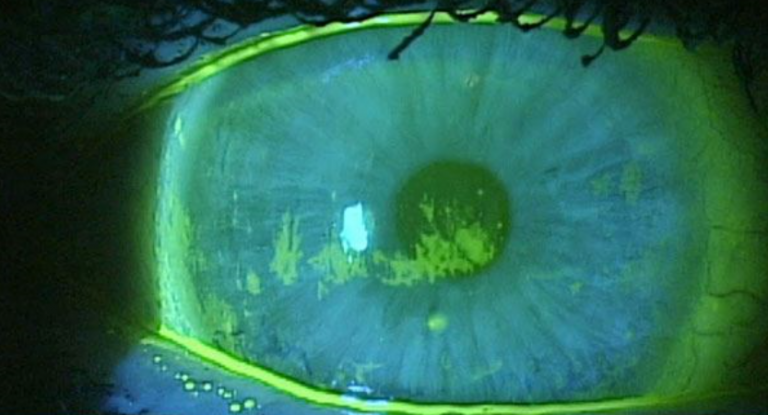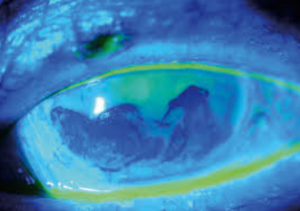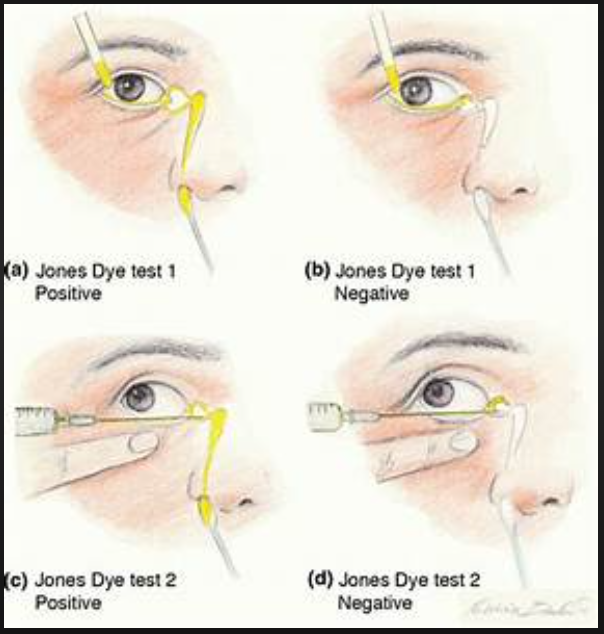KeratoConjunctivitisSicca
The medical term for Dry Eye is KCS (Kerato-Conjunctivitis Sicca), also referred to as OSD (Ocular Surface Disease) or MGD (Meibomian Gland Dysfunction).The above terms refer to associated conditions resulting in various frustrating ocular symptoms in which inadequate tears remain on the eye surface, more commonly as we age. This results in friction & thus irritation of the ocular surface by the continuous rubbing of the upper lid, which in turn causes the surface epithelial cells to become damaged. Note the pic to the left demonstrates corneal scratches (bright green vertical details). Like a scratched window, this often progresses to more permanent vision loss as the corneal tissue may scar.
There are 3 layers of to the Tear Film:
.png)
Aqueous Layer - Produced by the Lacrimal Gland - Water-like layer that we normally relate to as tears
.png)
Mucous Layer - Produced by the Goblet Cells - Binds the Tears to the Corneal surface
.png)
Lipid Layer - Produced by the Meibomian Glands - Oily layer that prevents Evaporation of the aqueous layer
Also effective for gradual Chalazion reduction ....Scroll down to learn more about our Dry Eye Treatment
.png)
Follow up Care & Maintenance
Depending on how long the Meibomian Glands have been congested, after-care regimen is prescribed in order to re-train the glands to resume production of the tear oils. This generally includes a heat-mask, lid-care, vitaminA & various eye drops/sprays. In severe cases, some or all of the meibomian glands may have become permanently damaged & oil/tear production may not resume & one may have to rely solely on the Lacrimal Gland's aqueous tears.
Depending on how long the Meibomian Glands have been congested, after-care regimen is prescribed in order to re-train the glands to resume production of the tear oils. This generally includes a heat-mask, lid-care, vitaminA & various eye drops/sprays. In severe cases, some or all of the meibomian glands may have become permanently damaged & oil/tear production may not resume & one may have to rely solely on the Lacrimal Gland's aqueous tears.

905-592-3963 | clinic@drmvarshney.ca | Dr. Malini Varshney, OD | Halton Family Health Center | 2951 Walkers Line Burlington ON L7M 4Y1
Clinic Hours: Monday: 9:00am-7:00pm | Tuesday: 8:00am-6:00pm | Wednesday: 10:00am-6:00pm | Thursday: 8:00am-6:00pm | Friday: 8:00am-6:00pm


